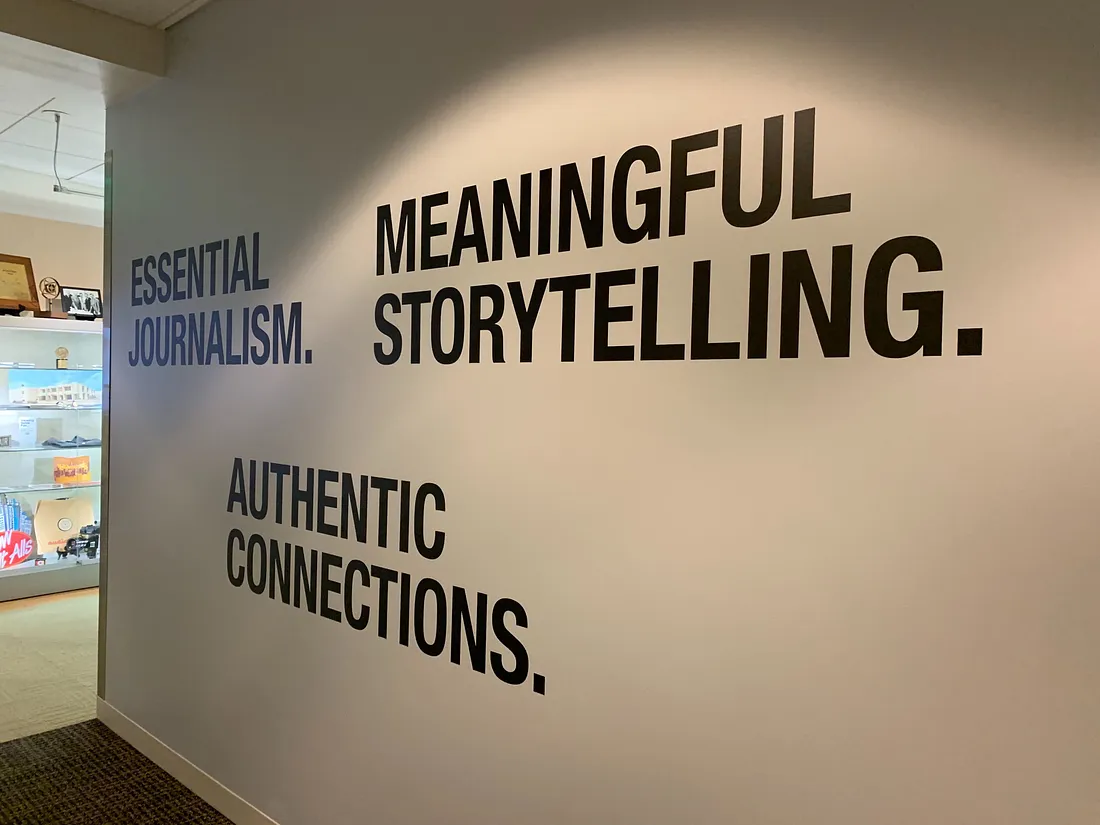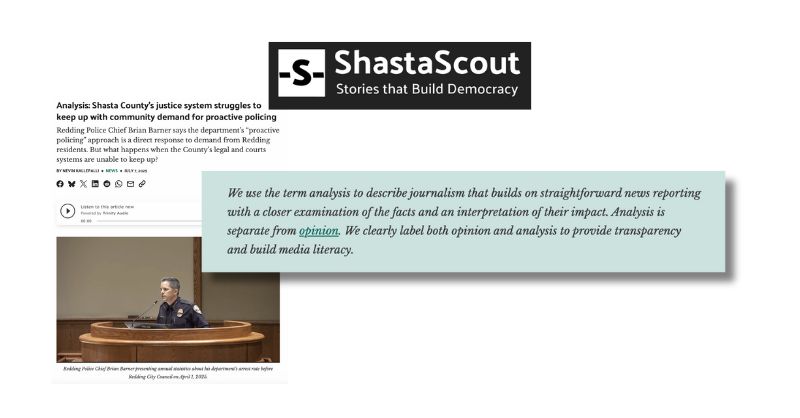
Research by Trusting News and the Center for Media Engagement found that TV newsrooms can build trust with their audiences by explaining why a story is covered.
‘More complete and relatable:’ What research finds about how a TV newsroom can earn trust on air
At Trusting News, we’re often asked by newsrooms how we know our strategies work. And it’s an important question.
We’re always happy to point to examples of what newsrooms say is effective as they strive to demonstrate credibility and earn trust. But we’re also especially grateful when we have the chance to work with academic researchers who can isolate strategies and create new knowledge about how the public perceives journalism.
Through a series of focus groups, Trusting News and the Center for Media Engagement found that TV newsrooms can build trust with their audiences by explaining why a story is covered, providing additional resources at the end of stories and inviting audience participation.
Read the full research report here. Read the scripts for the stories here.
The focus groups featured news content from WCPO, an E.W. Scripps owned station in Cincinnati and a Trusting News newsroom partner. The goal of the focus groups was to determine how TV news audiences would perceive the addition of the following trust elements:
- An introduction that described how and why the story was reported
- Information that encouraged audience participation or provided resources at the end of the story
- A description of the station’s overall mission for the story, provided in the middle of the report (for example, explaining that the station covered a story about a police officer’s arrest because he is in a position of power in the community).
The focus group participants compared two versions of the same story and discussed them at length. They watched news clips from actual WCPO broadcasts. They also watched a new version of each story that included the trust elements mentioned above, which the station’s journalists created with support from Trusting News.
According to the Center for Media Engagement, the results suggest that news stations should:
- Explain why the story is being done and make it clear why the explanation is being provided.
- Encourage audience participation or provide additional resources at the conclusion of the story.
- Keep these trust items brief and to the point.
“Participants noted that the news clips with trust items seemed more complete and relatable,” the research found. “Several participants used phrases such as ‘personal connection’ to describe why they preferred these versions of the clips, even though they could not immediately identify what was different about them.”
Mike Canan, the Senior Director of Local Content at WCPO, said he plans to continue inserting trust language into stories based on this research.
“We will put a heavy focus on keeping the trust references as short as possible to avoid distracting from the content,” he said. “We will work as a team to create systems to identify the best stories to include trust language. Like anything else, it is about priorities and focus. Our team is eager to continue to experiment and most of all to continue to build stronger relationships with our audience.”
Here’s a look at each of the three recommendations:
Explain the “why” of the coverage
For the reworked stories, WCPO used Trusting News strategies to add language to the beginning that explained what the story was going to be about and why the coverage of that story was important.
For one story, the introduction explained it was a “story about local people sharing their personal experiences to help others.”
According to the research, “people who liked these explainers saw them as a way for the station to explain why they were doing the story.” One focus group participant noted this part of the story made her feel like WCPO cares about her community.
“For me, it made it feel like they were talking specifically to me. Like, ‘Hey, I want you to know what’s going on. I want you to know what happened in this story, and here are the facts,’” she said.
Another said the explanation would make him trust the TV station more.
“They’re hitting all the bases,” he said. “They’re explaining why — they clearly state their mission. Clearly state the reason for the news story, and all those things are kind of like trying to build rapport with the person that are the audience. So yeah, I would definitely trust them more and would watch them more.”
Encourage audience participation
At the end of the news stories, Trusting News added information to encourage feedback or provide additional resources related to the story’s subject matter.
One story included an email address and phone number so people could contact the TV station about future community events. In the police officer story, viewers were provided with a domestic abuse hotline number.
According to the research, “in both cases, participants felt this addition improved the story, and, in some cases, made them trust the station more …Multiple participants noted that the domestic violence hotline number was helpful for the police officer story, and it made them feel they trusted WCPO more.”
One focus group participant said:
“I like that they — at the end of the second video — they opened it up kind of to the community. Hey, what do you want to know about? We’re not going to just keep telling you or shoving information down your [throat]. Tell us what we want — what you want to know about?”
https://cdn.embedly.com/widgets/media.html?src=https%3A%2F%2Fwww.youtube.com%2Fembed%2Fd_kBOTtUSqA%3Ffeature%3Doembed&display_name=YouTube&url=https%3A%2F%2Fwww.youtube.com%2Fwatch%3Fv%3Dd_kBOTtUSqA&image=https%3A%2F%2Fi.ytimg.com%2Fvi%2Fd_kBOTtUSqA%2Fhqdefault.jpg&key=a19fcc184b9711e1b4764040d3dc5c07&type=text%2Fhtml&schema=youtubeWatch both versions of this VO about a police officer being arrested. The first half of the clip shows the PKG as it aired on TV. The second half of the clip shows the PKG with the trust language added.
Keep trust elements brief
The research showed that a minority of the focus group participants thought the trust elements added unnecessary information. While it was a minority that felt this way, it is worth noting that when added trust elements to an on-air product, it is recommended to keep the trust elements brief and to the point.
It is also worth noting that not every story you produce may need a trust element. When thinking about when to add these layers of transparency, focus on stories where you can explain an ethical decision you made or talk about why it’s important to report on the story in the first place. Try to anticipate what pushback or misassumptions viewers might make about the story, and proactively address them. Then keep the language direct and to the point.
Support for your newsroom
If you’d like to talk about how your newsroom could act on this research, feel free to email me at lynn@TrustingNews.org. And find some quick, actionable steps you could take in our weekly newsletter, Trust Tips.
At Trusting News, we learn how people decide what news to trust and turn that knowledge into actionable strategies for journalists. We train and empower journalists to take responsibility for demonstrating credibility and actively earning trust through transparency and engagement. Subscribe to our Trust Tips newsletter. Follow us on Twitter and LinkedIn. Read more about our work at TrustingNews.org.

Assistant director Lynn Walsh (she/her) is an Emmy award-winning journalist who has worked in investigative journalism at the national level and locally in California, Ohio, Texas and Florida. She is the former Ethics Chair for the Society of Professional Journalists and a past national president for the organization. Based in San Diego, Lynn is also an adjunct professor and freelance journalist. She can be reached at lynn@TrustingNews.org and on Twitter @lwalsh.



